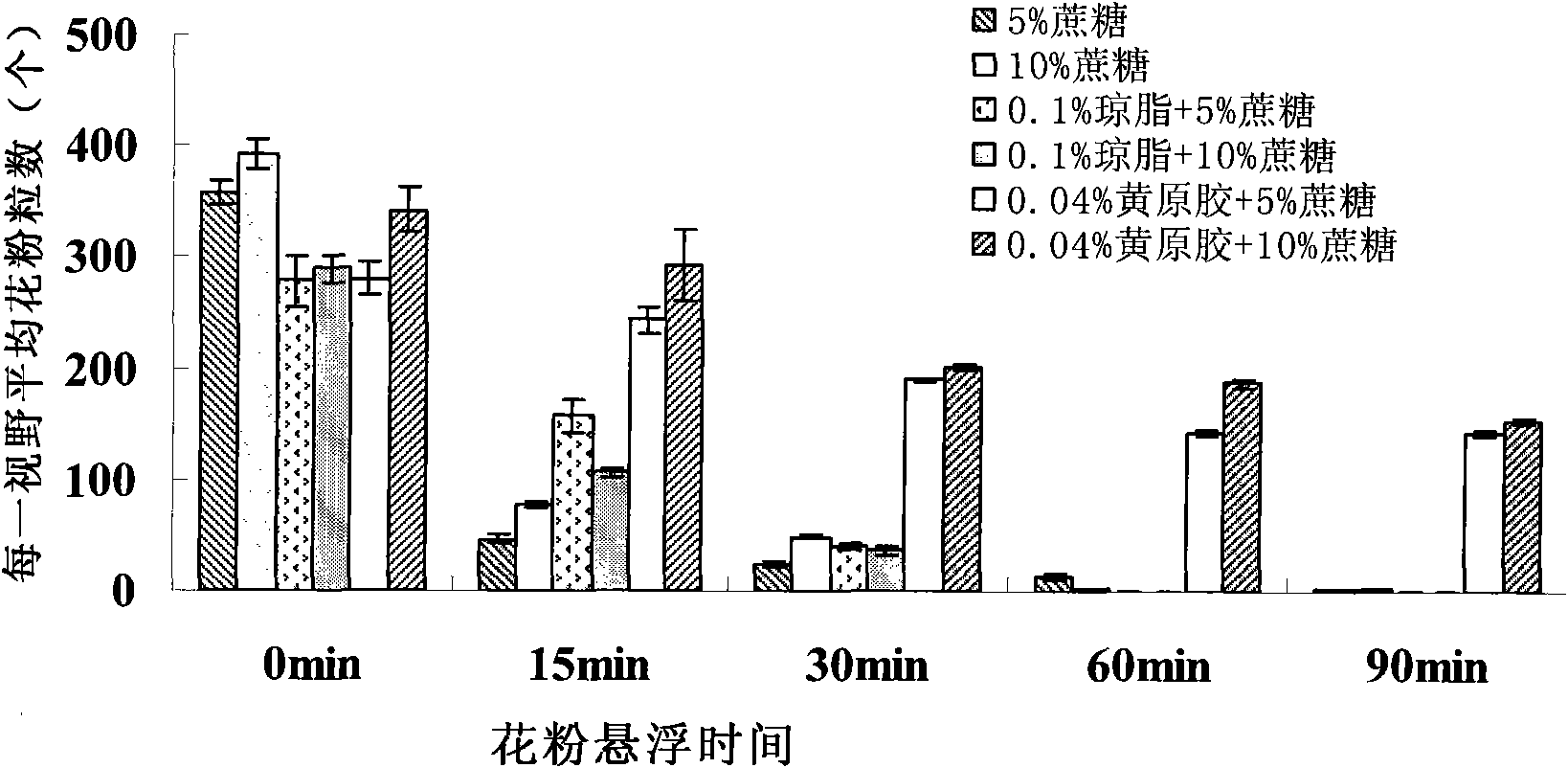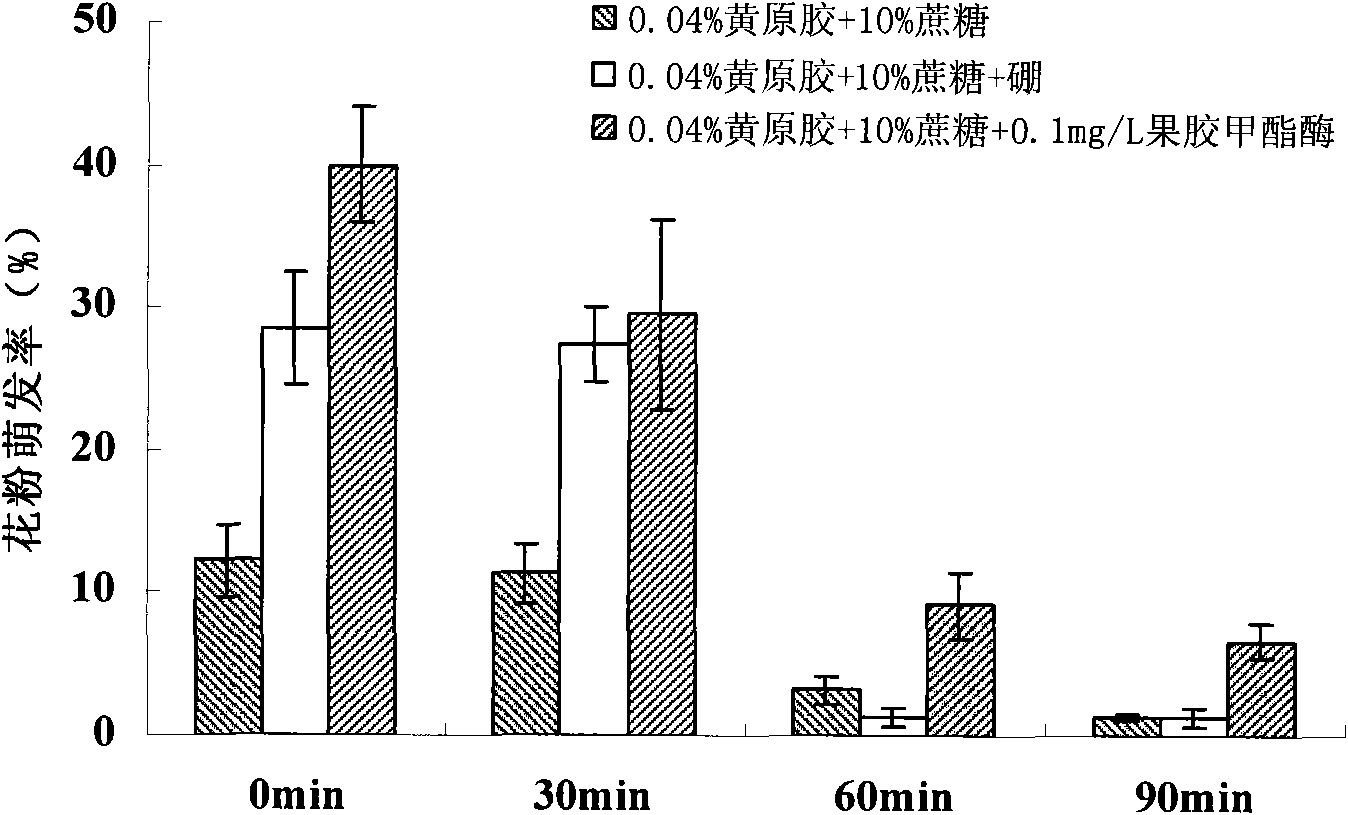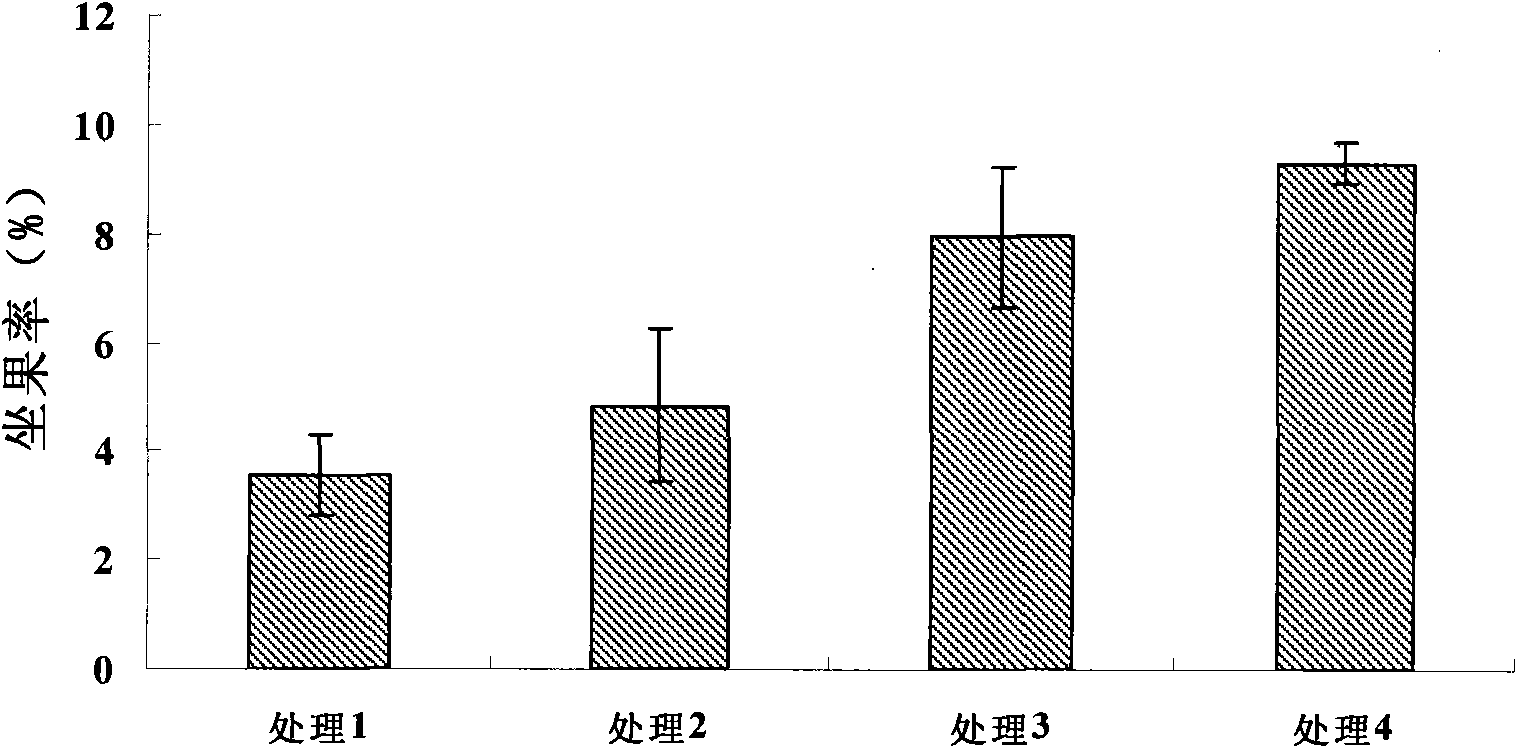Pollen suspension suitable for liquid pollination of fruit trees and preparation method thereof
A pollen suspension and liquid pollination technology, applied in the directions of plant cells, cultivation, application, etc., can solve the problem of pollen loss of viability, and achieve the effects of saving labor, promoting fruit setting, and improving pollination quality.
- Summary
- Abstract
- Description
- Claims
- Application Information
AI Technical Summary
Problems solved by technology
Method used
Image
Examples
Embodiment 1
[0023] Example 1: Screening of pollen suspended components
[0024] Aiming at the problems of poor self-flowering, poor pollination quality and low fruit setting rate of the apricots used in the experiment, we want to improve their pollination status through liquid pollination. First adopt conventional method to configure pollen suspension namely: 10% sucrose+0.3% boric acid+0.3% pollen sprays apricot tree, but fruit set rate is very low, also lower than the tree body of contrast (not spraying). It shows that this method has no effect on promoting apricot fruit setting. After careful observation, it was found that the pollen precipitated soon after the prepared liquid was put in. Therefore, we started the screening of ingredients that can make the pollen well suspended. Six kinds of solutions were prepared in this experiment (the following concentrations are weight percent concentrations): (1) 5% sucrose solution; (2) 10% sucrose solution; (3) 0.1% agar+5% sucrose mixed solu...
Embodiment 2
[0025] Example 2: Component Screening for Maintaining Pollen Viability in Liquid
[0026] After confirming the effect of the mixed solution of 0.04% xanthan gum + 10% sucrose on pollen suspension, how to keep the pollen in the liquid for a long time is another question we discuss. To this we have designed following experiments (the following concentrations are weight percent concentrations): (1) 0.04% xanthan gum+10% sucrose mixed solution; (2) 0.04% xanthan gum+10% sucrose+0.3% boron mixed Solution; (3) 0.04% xanthan gum + 10% sucrose + 0.01% pectin methylesterase mixed solution, pollen concentration is 0.3%. After the pollen solution was mixed with the above solution, place it still. At 0, 15, 30, 60, and 90 min, 200 μL of the solution was taken from the bottom for the pollen germination experiment (medium formula: 1% agar + 10% sucrose, 2 ~3h), calculate the pollen germination rate under the microscope, and repeat 3 times. The result is as figure 2 Shown: It can be seen...
Embodiment 3
[0028] Embodiment 3: Practical application effect
[0029] According to the above formula, we conducted a pollination experiment on the golden sun apricot at the full flowering stage in the hot spring nursery in Haidian District, Beijing. Four treatments were set up in the experiment (the following concentrations are weight percentages), that is, treatment 1 was 10% sucrose+0.3% boron mixed solution; treatment 2 was 0.1% agar+10% sucrose+0.3% boron mixed solution; treatment 3 was Mixed solution of 0.04% xanthan gum + 10% sucrose + 0.01% pectin methylesterase; treatment 4 was artificial spot infusion, and the pollen concentration of liquid pollination was 0.3%. The result is as image 3shown. It can be seen from the figure that the fruit setting rate of artificial spot-infected trees is the highest, and the pollen suspension formula of 0.04% xanthan gum + 10% sucrose + 0.01% pectin methylesterase in liquid pollination has the highest fruit-setting rate, second only to artific...
PUM
 Login to View More
Login to View More Abstract
Description
Claims
Application Information
 Login to View More
Login to View More - R&D
- Intellectual Property
- Life Sciences
- Materials
- Tech Scout
- Unparalleled Data Quality
- Higher Quality Content
- 60% Fewer Hallucinations
Browse by: Latest US Patents, China's latest patents, Technical Efficacy Thesaurus, Application Domain, Technology Topic, Popular Technical Reports.
© 2025 PatSnap. All rights reserved.Legal|Privacy policy|Modern Slavery Act Transparency Statement|Sitemap|About US| Contact US: help@patsnap.com



